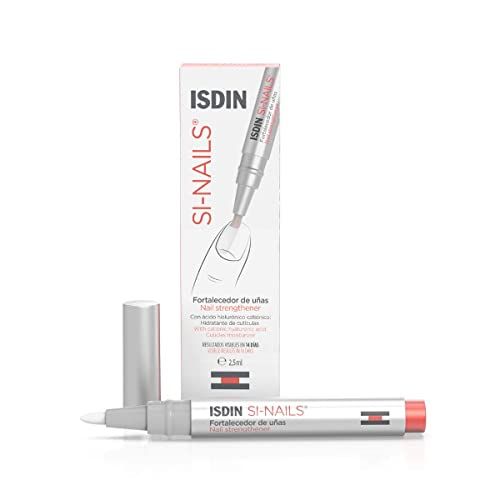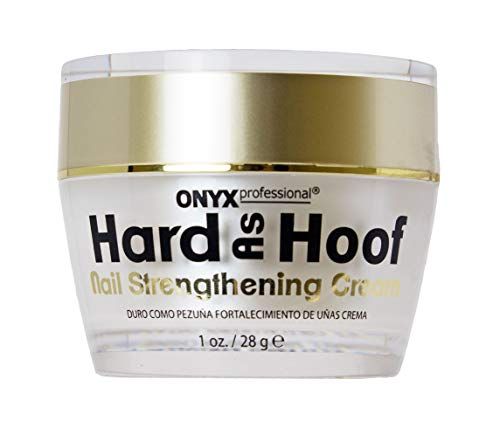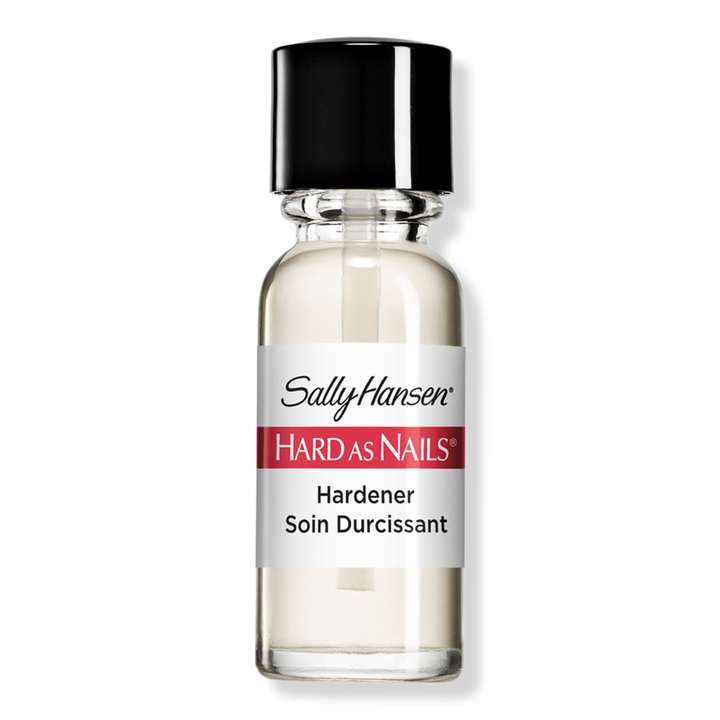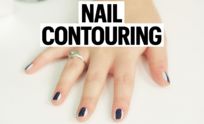Applying a fresh coat of nail polish can provide an immediate mood boost, but it can also be concerning if you suddenly notice your nails aren’t as smooth as they used to be. Oftentimes ridges in fingernails are just a sign of aging, but in some cases they can be a red flag that something is off within your body. Here, top dermatologists explain what causes fingernail ridging and how you can put a stop to it.
What are ridges in fingernails?
“Ridges in the fingernails are vertical or horizontal depressions on the nail plate,” says Angela Kim, D.O., a board-certified dermatologist practicing in Yuba City, California. “Ridges can be longitudinal (vertical lines) traveling from the cuticle to the tips of your nail or transverse (horizontal lines) extending from one side to the other of your nail.”
What causes nail ridges?
Whether the ridges in your nails are vertical or horizontal can be a clue to what’s causing the ridging.
Causes of vertical ridges in nails
“Just as your skin starts to show age-related changes such as thinning and sagging, nails also show signs of aging,” says Dr. Kim. “Longitudinal ridging of nails is usually age-related and usually nothing to worry about.” However, decreased circulation to fingertips, stripping nails with solvents during manicures, tumors and certain dermatological conditions can also cause vertical ridges in nails, she says.
Causes of horizontal ridges in nails
Horizontal riding (also called Beau’s lines) is usually caused by things other than aging, most commonly damage to the nail matrix. “If you are looking at your thumb, the area between the bottom end of the nail where the cuticles are and the thumb joint is where the nail matrix is under the skin,” explains Dr. Kim. “If this area is mechanically traumatized by manicures, a habit of picking or rubbing at the area or inflamed by dermatological conditions such as eczema or psoriasis, horizontal lines can show up.”
Systemic problems within the body can also harm the nail matrix and result in horizontal rides, according to Saya Obayan, M.D., M.P.H., a board-certified dermatologist and CEO of Skin Joy Dermatology in Austin, Texas.
If you have ridges, you and your doctor may want to consider these conditions as the potential culprit:
- Fever
- Viral illness (such as measles or mumps)
- Vitamin or mineral deficiencies (such as iron, zinc, calcium, B complex vitamins or vitamin C)
- Medication reactions (such as chemotherapeutics)
- Diabetes
- Kidney disease
- Parathyroid disease
- Heart disease
- Lung disease
How do you get rid of nail ridges?
The most effective treatment for your nail ridges depends on what’s causing them. That said, early intervention is always key because long-term trauma to the nail matrix can lead to permanent damage and permanent ridging of nails, says Dr. Kim. Here are some common solutions for nail ridging:
Address underlying conditions
The first step to smoother nails is treating any systemic diseases like the ones mentioned above. As your overall health improves, so will the health of your nails, according to Dr. Kim.
Consider supplements
“Vitamin A, vitamin B, biotin, iron and zinc are needed for normal growth of nails, but moderation of these vitamins is key,” says Dr. Kim. “Too much of one or more vitamins can lead to serious health issues. High amounts of biotin can also alter thyroid function test as well as cardiac marker screen test for heart attacks. You should ask your doctor before consuming.”
Give your nails some TLC
“Just as you would hydrate and care for damaged, dyed hair with conditioners, nails also need tender loving care,” says Dr. Kim. Keep cuticles moisturized, avoid biting or picking nails and press pause on manicures.
Apply a nail hardener
Dr. Obayan says she often prescribes a nail hardener called Genadur to help strengthen nails. “Genadur is actually what we call a hydrosoluble nail lacquer, so it goes into the nail and repairs any areas where you might have some damage. It’s kind of like filling in little potholes in the nail,” she says. However, she notes, Genadur can be pricey, so you may want to try an over-the-counter nail hardener from brands like Isdin, Sally Hansen or Orly. “A lot of the nail hardeners that you’ll find over the counter are usually going to just provide a coating to the nail as opposed to actually going in there and repairing the nail.” To make it easier for you to figure out which nail strengtheners are worth the money, the Good Housekeeping Institute Beauty Lab polled more than 1,300 panelists to pinpoint the best nail strengtheners on the market.
Keep buffing to a minimum
Buffing might seem like the fastest fix for nail ridging, but it may not be the best choice for the long-term health of your nails. “I generally don’t love buffing because it causes destruction to the nail plate, and it can make it thinner and much more likely to break,” says Dr. Obayan. “If you’re going to buff, definitely keep it to a minimum — like maybe just once or twice a month — and always apply a nail hardener immediately after.”
How can you prevent nail ridges?
Use these dermatologist-approved tips to prevent nail ridges:
Eat the rainbow
“Nail health starts from our insides,” says Dr. Obayan. She recommends eating a diet that’s rich in vegetables and fruit, so you consume a variety of vitamins and minerals. It’s also helpful to limit inflammatory foods such as alcohol, refined carbohydrates and things that are high in saturated fat.
Care for cuticles
“It is important to not remove your cuticles during manicures and to keep the area moisturized,” says Dr. Kim. “Protecting the cuticles will protect your nail matrix stem cells so that your nails stay healthy and grow normally. Just like moisturizing your skin can help to protect the skin barrier for healthier glowing skin, you want to give the same tender loving care to your nails and its surrounding skin to keep them hydrated and healthy.”
Avoid over-grooming
Using acrylic kits, gel polishes or polymer powder over and over again can cause brittle, split, discolored or ingrown nails. “It’s really important for folks to not overdo your nails,” says Dr. Obayan. “You don’t have to always have a gel or a powder or a design on your nail. Give your nail a break from time to time and take care of them just like you take care of your body.” You may also want to consider using a hydrosoluble nail hardener in between manicures, she adds.
When should you see a doctor for nail ridging?
While vertical ridging is usually a sign of aging, horizontal ridging can be an indicator that something isn’t right — whether it’s an internal issue or the way you treat your nails externally. You should also be on the lookout for discoloration, pain or abnormal growth under or around the nail.
“If you notice a change to your nails, the most important thing is to make sure it’s nothing to worry about so go see your doctor,” says Dr. Obayan. They may take photos, consider your medical history, ask about your nail care practices and/or order blood tests to get a better idea of what’s going on. “Board-certified dermatologists are experts of skin, hair and nails and are trained to gather and piece together the puzzle to narrow down a list of potential diagnoses and arrive at the most likely or correct diagnosis,” says Dr. Kim. Once they figure out the cause of your nail ridges, your dermatologist can point you toward the right treatment plan.
Kaitlyn Pirie is a senior editor in the Hearst Health Newsroom, where she reports, writes and edits research-backed health content for Good Housekeeping, Prevention and Woman’s Day. She has more than 10 years of experience talking to top medical professionals and poring over studies to figure out the science of how our bodies work. Beyond that, Kaitlyn turns what she learns into engaging and easy-to-read stories about medical conditions, nutrition, exercise, sleep and mental health. She also holds a B.S. in magazine journalism from Syracuse University.
This content is imported from OpenWeb. You may be able to find the same content in another format, or you may be able to find more information, at their web site.





